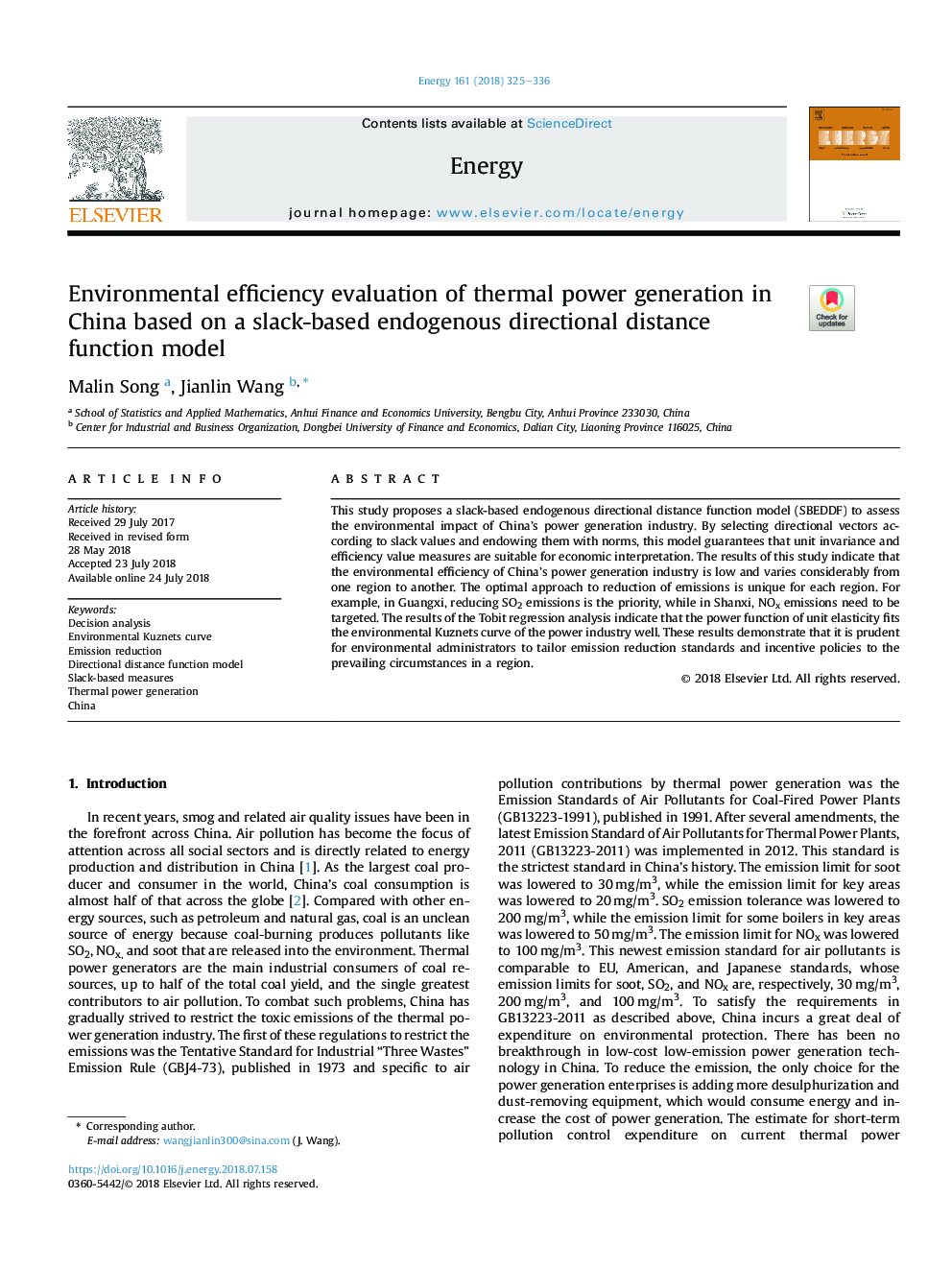| Article ID | Journal | Published Year | Pages | File Type |
|---|---|---|---|---|
| 8070859 | Energy | 2018 | 12 Pages |
Abstract
This study proposes a slack-based endogenous directional distance function model (SBEDDF) to assess the environmental impact of China's power generation industry. By selecting directional vectors according to slack values and endowing them with norms, this model guarantees that unit invariance and efficiency value measures are suitable for economic interpretation. The results of this study indicate that the environmental efficiency of China's power generation industry is low and varies considerably from one region to another. The optimal approach to reduction of emissions is unique for each region. For example, in Guangxi, reducing SO2 emissions is the priority, while in Shanxi, NOx emissions need to be targeted. The results of the Tobit regression analysis indicate that the power function of unit elasticity fits the environmental Kuznets curve of the power industry well. These results demonstrate that it is prudent for environmental administrators to tailor emission reduction standards and incentive policies to the prevailing circumstances in a region.
Keywords
Related Topics
Physical Sciences and Engineering
Energy
Energy (General)
Authors
Malin Song, Jianlin Wang,
